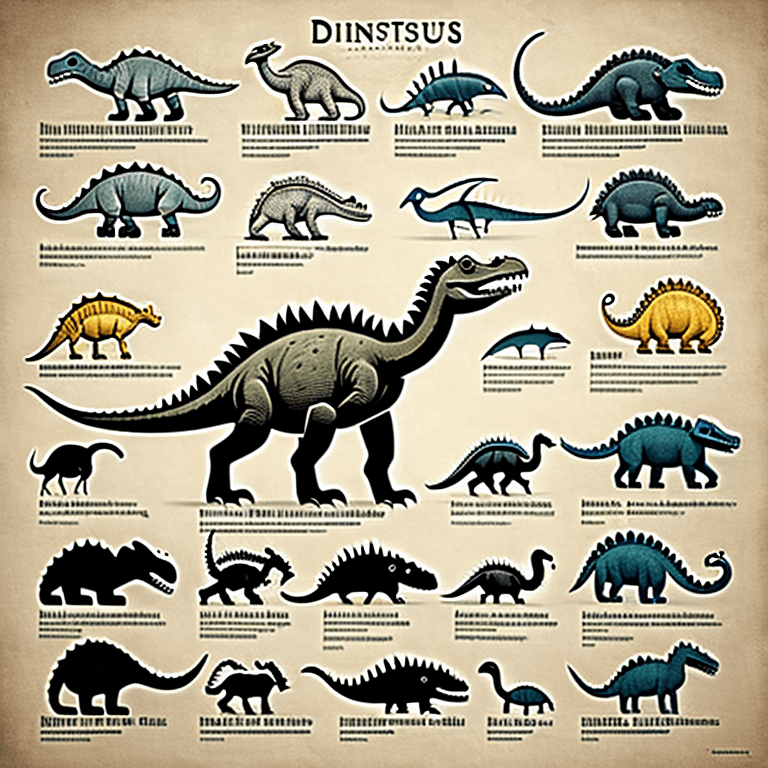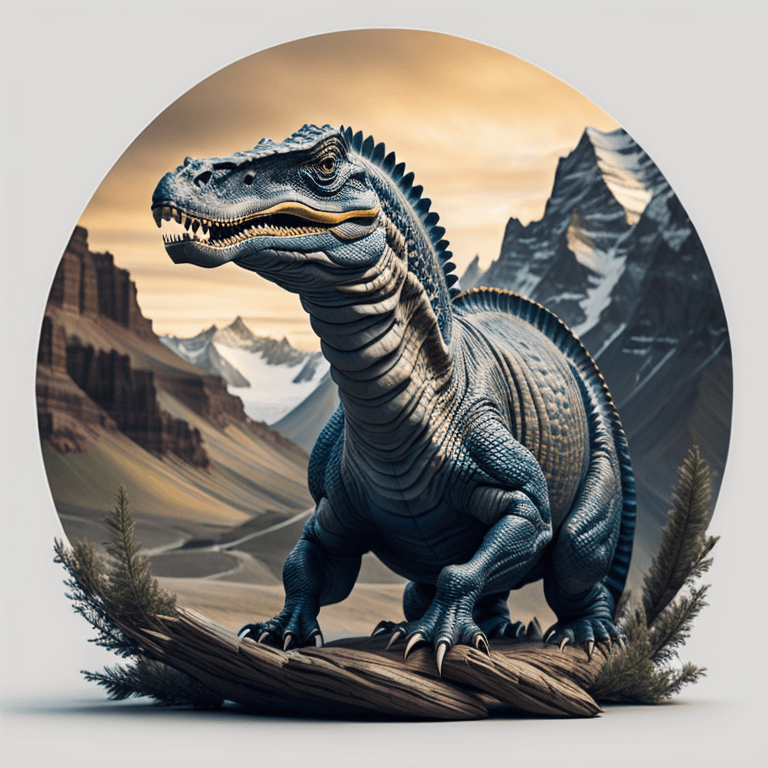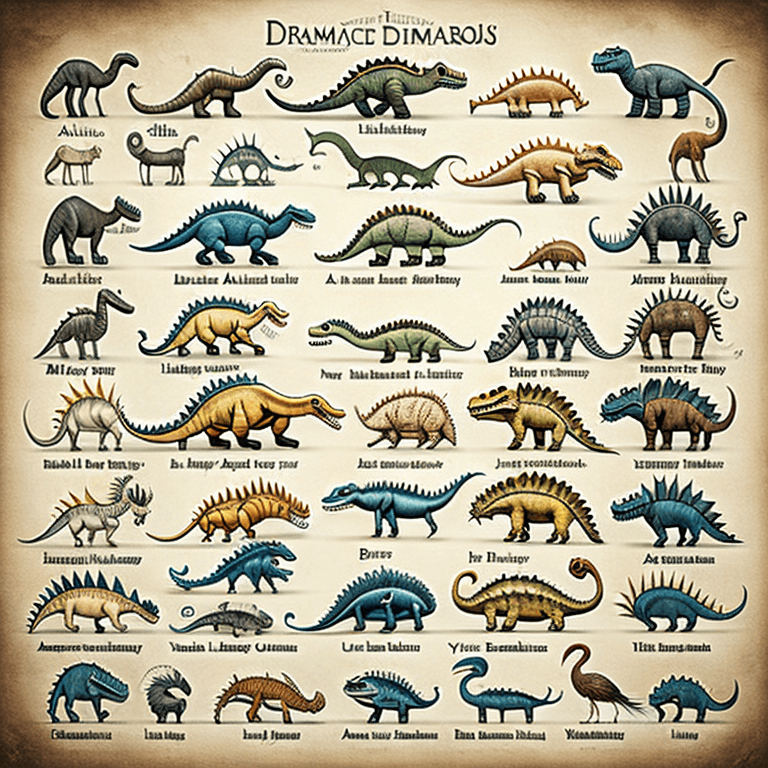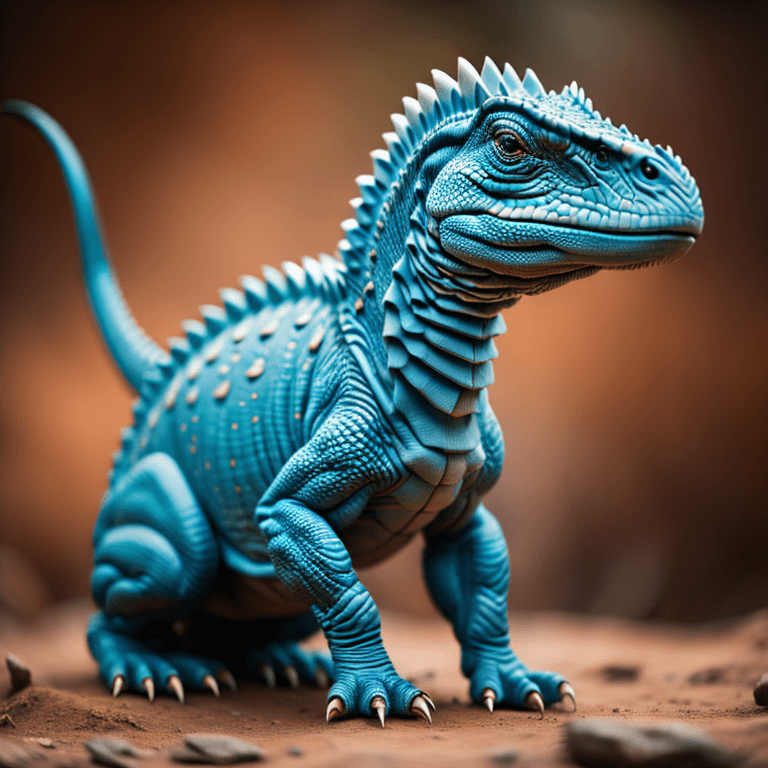A Cool List Of The Longest Dinosaur Names to Twist Your Tongue
Step into the prehistoric world, where giants roamed the Earth and names could be as long as the creatures themselves! We’re about to journey through time and explore the dinosaurs with the longest names ever recorded. Get ready to encounter tongue-twisting titles and discover fascinating facts about these incredible creatures.
We will look at the fossil record from the Early Jurassic period to the Cenozoic era. We will learn about dinosaurs with rather long names! Let’s explore the amazing world of dinosaurs with long names, from those who lived in jungles to those who swam in the deep seas!
Many dinosaurs existed with long names. Dinosaur fans have probably heard of famous ones like Tyrannosaurus rex and Apatosaurus. But which dinosaurs had the longest names on record?

But did you know that there are some dinosaurs with incredibly long names?
Here is an example of just one of the dinosaurs with a long name, Micropachycephalosaurus hongtuyanensis. That’s 37 letters!
Explain it to a child
A list of dinosaurs with the longest names include: Micropachycephalosaurus, Carcharodontosaurus, Archaeornithomimus, Pachycephalosaurus, and Eustreptospondylus. These are all impressive examples of their kind!
Top Ten Longest Dinosaur Names
Here is a list of 10 Dinosaurs that have the longest scientific names:

- Micropachycephalosaurus hongtuyanensis – 37 letters
- Pachycephalosaurus wyomingensis – 30 letters
- Parasaurolophus cyrtocristatus – 29 letters
- Archaeornithomimus asiaticus – 27 letters
- Charonosaurus jiayinensis – 24 letters
- Albertosaurus sarcophagus – 24 letters
- Lambeosaurus laticaudus – 22 letters
- Styracosaurus ovatus – 19 letters
- Centrosaurus apertus – 19 letters
- Troodon inequalis – 16 letters
More incredibly long dinosaur names
- Amargasaurus cazaui – 21 letters
- Dryptosaurus aquilunguis – 24 letters
- Alioramus altai – 18 letters
- Wannanosaurus yansiensis – 22 letters
- Tylocephale gilmorei – 20 letters
- Tarchia kielanae – 17 letters
- Prenocephale prenes – 18 letters
- Minotaurasaurus ramachandrani – 24 letters
- Altirhinus kurzanovi – 18 letters
- Saurolophus angustirostris – 22 letters
- Neovenator salerii – 19 letters
- Opisthocoelicaudia skarzynskii – 26 letters
- Sinocalliopteryx gigas – 20 letters
- Magyarosaurus dacus – 17 letters
- Sciurumimus albersdoerferi – 23 letters
While most dinosaur names are reasonably short, some genera and species have extensive scientific names. Paleontologists have given particularly long names to various pachycephalosaurids, lambeosaurines, tyrannosaurids, and ornithomimids. The longest dinosaur names often indicate a dinosaur’s geographic location or the name of the discoverer.

Micropachycephalosaurus hongtuyanensis has the record for the longest name at 37 letters!
The 5 Longest Dinosaur Names
These dinosaurs with their fascinating names all exceed 18 characters in length!
- Micropachycephalosaurus
- Carcharodontosaurus
- Archaeornithomimus
- Pachycephalosaurus
- Eustreptospondylus
The first of the list of The Longest Dinosaur Names: Micropachycephalosaurus
Micropachycephalosaurus is an intriguing small dinosaur species that lived during the early Cretaceous period.
This was a little creature, measuring only about 2-3 feet long and weighing a mere 10-20 pounds.
This dinosaur probably walked on two legs, but its thick skull makes scientists think they might have butted heads with each other.
This would have made Micropachycephalosaurus unique in the world of dinosaurs.
You can find more information about Micropachycephalosaurus on Wikipedia, the free encyclopedia.
The second dinosaur with A long name: Carcharodontosaurus

Carcharodontosaurus was a meat-eating dinosaur that lived about 100 million years ago during the Cretaceous period.
This was one of the largest land predators of its time, measuring up to 12.5 meters long and weighing up to 7 tons!
Carcharodontosaurus was huge, and it had incredibly sharp teeth, like a great white shark! These teeth were perfect for tearing apart its prey.
Carcharodontosaurus was a scary dinosaur that hunted all kinds of other dinosaurs. This made it a top predator of its time.
The third dinosaur with A long name: Archaeornithomimus

Archaeornithomimus was a feathered dinosaur that lived during the middle Jurassic Period. Belonging to the ornithomimid family, This species was approximately 8 feet long and weighed about 200 pounds.
The Archaeornithomimus had a beak like a bird, long arms, and wide claws for grabbing food.
Archaeornithomimus was an omnivore, so its diet consisted of invertebrates, small mammals, lizards, and plants.
These feathered dinosaurs were fast runners on account of their short legs; hence they could easily flee from predators to stay safe.
Fossil records also suggest that Archaeornithimius traveled in flocks and nested in large colonies with other dinosaurs. With these qualities,
The fourth dinosaur with a long name: Pachycephalosaurus
Pachycephalosaurus is an amazing dinosaur species that both kids and adults find fascinating. It had a large, thick skull, with a rounded dome-like shape across the top.
Scientists think Pachycephalosaurus dinosaurs used their heads to ram each other.
This strong dinosaur could run fast on all four legs, using its powerful back legs to push it forward.
Pachycephalosaurus might have used its thick skull for defense, and people who study dinosaurs are still amazed by it.
The fifth on the list of dinosaurs with the longest name: Eustreptospondylus
Eustreptospondylus was one of the earliest carnivorous and theropod dinosaurs known as a Megalosaurid.
Eustreptospondylus lived about 175 million years ago in what we now call England. This dinosaur was about 6 to 8 meters long.
Eustreptospondylus was one of the first large predators! It ate other dinosaurs, fish, and even marine reptiles.
Becuase it had strong muscles, Eustreptospondylus had the capability to jump from long stretches when hunting smaller prey.
Eustreptospondylus fossils are rare, but scientists have studied how this dinosaur hunted and affected other dinosaurs.
Conclusion: List of The Longest Dinosaur Names
The world of dinosaurs continues to fascinate and intrigue us in the present day. Dinosaurs ruled the Earth for millions of years. They ranged from giant, long-necked sauropods in the Triassic Period to the scary Tyrannosaurs.
A mass extinction event wiped out the dinosaurs 66 million years ago, but we can still learn about them from fossils. This is because of the change in sea level that has occurred since that time, among other volcanic reasons!
Fossil scientists are always discovering cool new facts about dinosaurs! They learn about the different sizes and shapes of these creatures. They also explore the interesting reasons behind their unusual names!
Dinosaurs like Micropachycephalosaurus and Carcharodontosaurus have long names! These names help scientists organize dinosaurs and show what makes each one special.
We’re still learning about dinosaurs from fossils, so maybe we’ll find even more dinosaurs with super long names! Maybe somewhere in the North American mountains, Western Europe, or the United States, there is a new dinosaur fossil. Scientists might discover a dinosaur with an even longer name!
Since we first found dinosaurs, we have been amazed by them. They were not just huge, but they also have cool, hard-to-pronounce names!
Article Sources
Jacks of Science sources the most authoritative, trustworthy, and highly recognized institutions for our article research. Learn more about our Editorial Teams process and diligence in verifying the accuracy of every article we publish.
